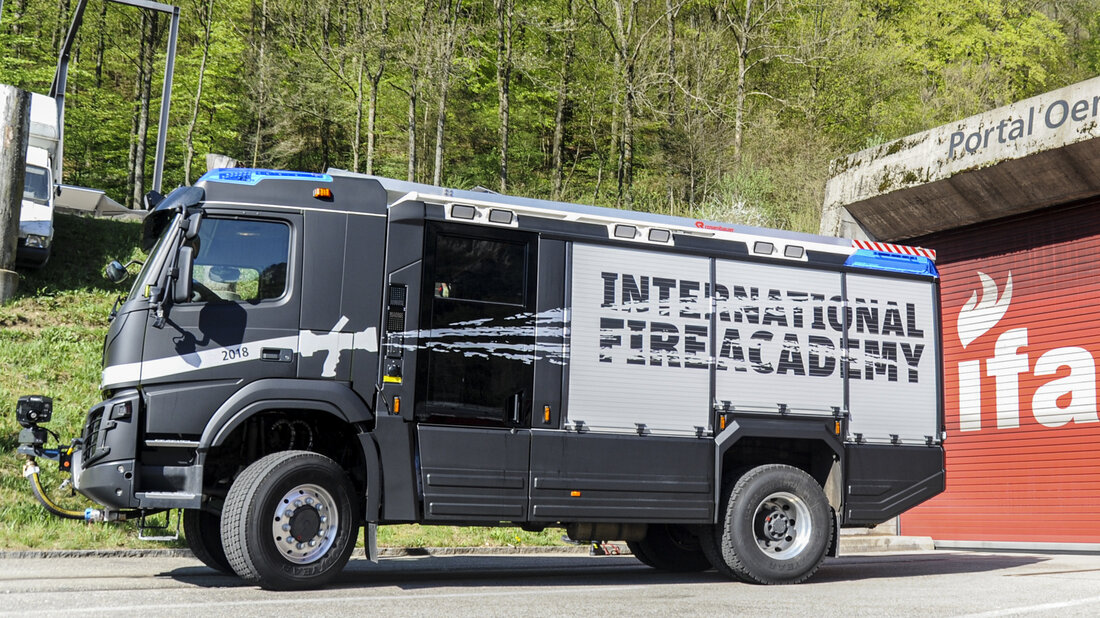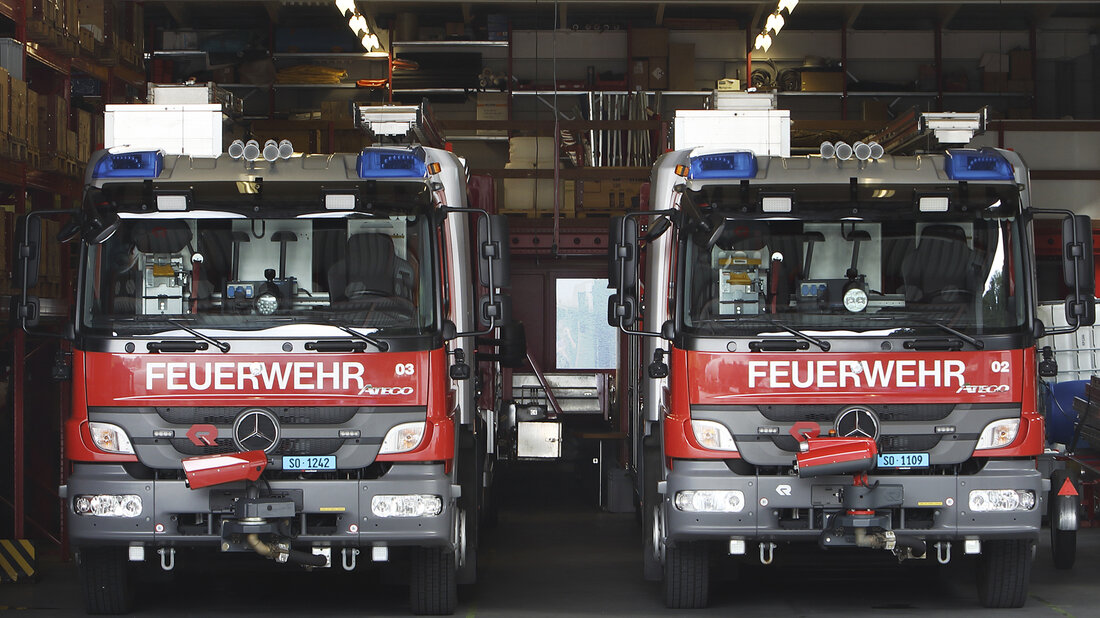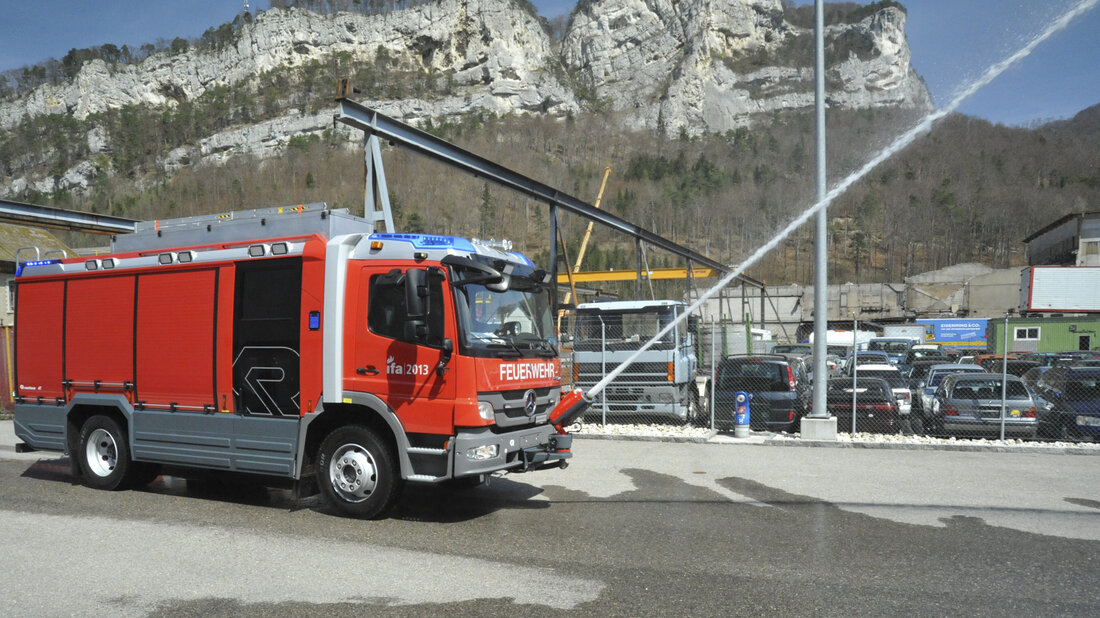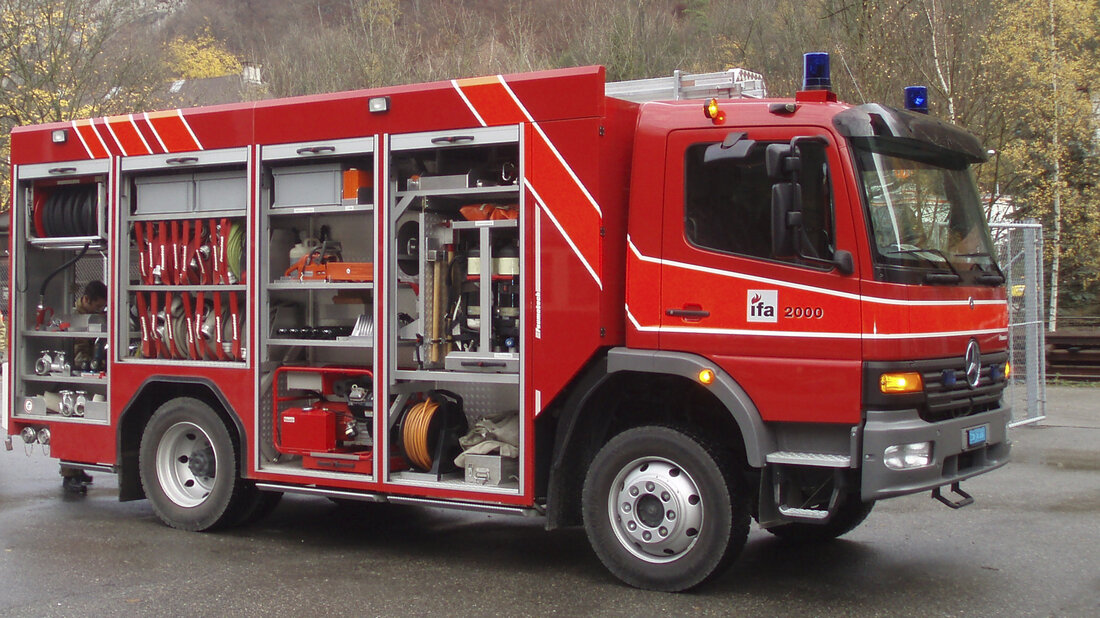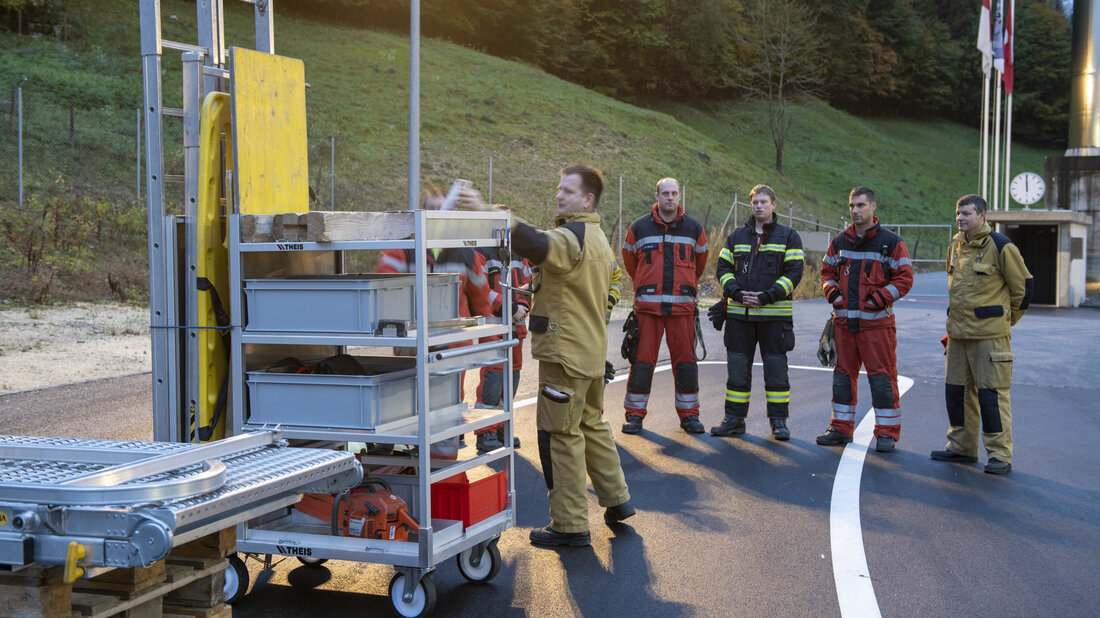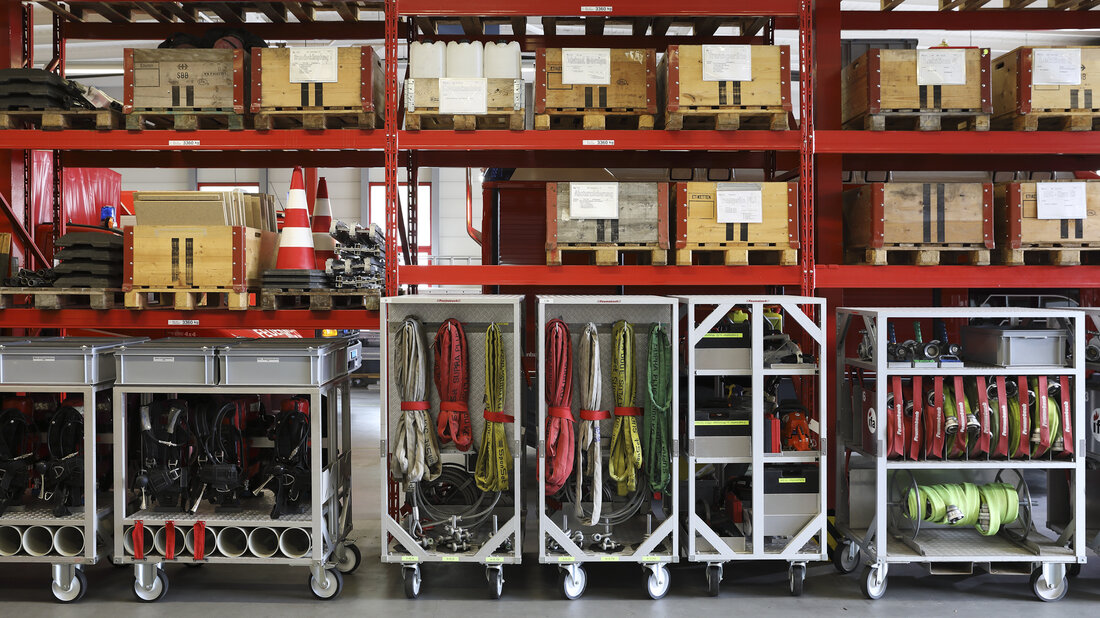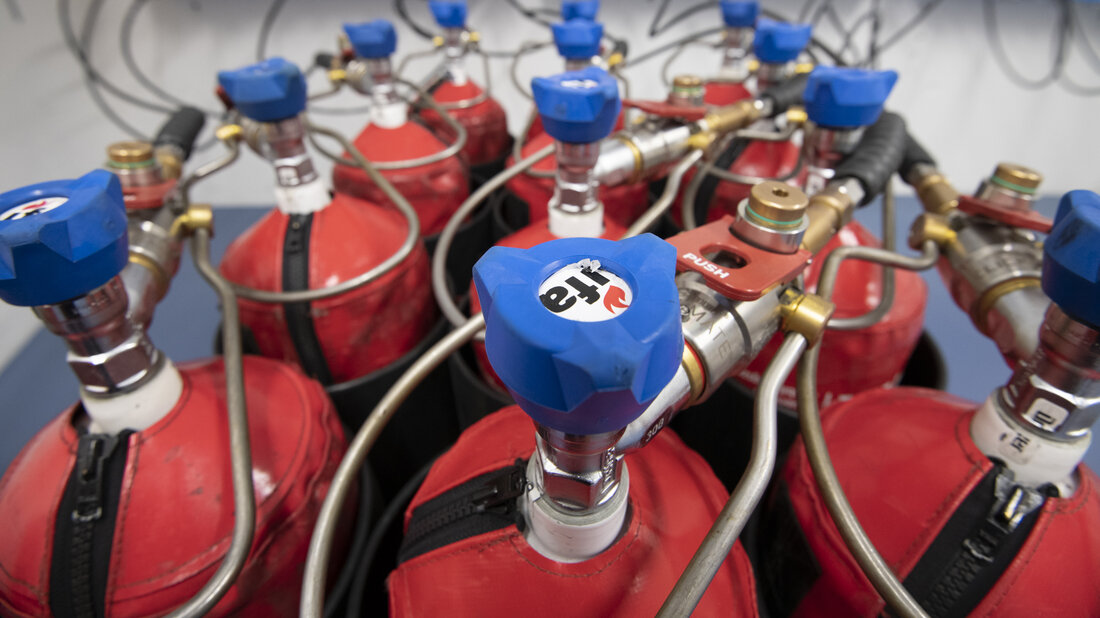
Well equipped for training
The equipment of our vehicles and the choice of tools are based on what fire services typically use for their operations and what has proven itself for the various tasks. The guiding principle is to handle operations with standard equipment as far as possible because only what is known and familiar can be used effectively during operations. Whether a fire service brings its own vehicle for training depends on the course and the possibilities of the service. The equipment for the participants can also be provided in whole or in part.
Four fire apparatus
In addition to various logistics and small vehicles, the vehicle fleet of the Intercantonal Fire Service Training Centre and the International Fire Academy includes four fire apparatus. Their equipment largely meets the standard, adapted to the requirements of the various courses. The fire apparatus are also used for courses of external organizers.
Black fire apparatus for tunnel courses
The most recent flashed in black fire apparatus is since 2018 at tunnel courses in Balsthal and Lungern in use. The Volvo FMX 460, built in 2015, is equipped with all-wheel drive. Since several tunnel fire services have a water cannon in their operational concept, all fire apparatus for tunnel courses have a water canon (1 500 l/min.). The tank capacity of this apparatus is 3 000 l, in addition to 400 l of foam agent. The vehicle is equipped with hose material and firefighting equipment.
Two fire apparatus with the same equipment
Two Mercedes Benz Atego 1628 were purchased in 2013 and 2014. The fire apparatuses are equipped with full standard equipment and a front water canon (1 500 l/min). The water tank capacity is 3 000 l, additionally 200 l of foaming agent is available. These two apparatuses can be used for all standard fire service and tunnel courses.


